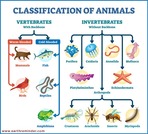
7th Grade Elementary school CLIL lesson about the Animal Classes
- Subject:
- Languages
- Life Science
- Material Type:
- Assessment
- Homework/Assignment
- Lesson Plan
- Author:
- David Cortes
- Date Added:
- 04/18/2024

7th Grade Elementary school CLIL lesson about the Animal Classes

An introduction to how animals communicate.

How do animals communicate in the environment? And how does this affect their behaviour? Learn about animal communication in this GCSE / K12 Ecology video from the Virtual School.
Are you a passionate teacher who would like to reach tens of thousands of learners?
Get in touch: vsteam@fusion-universal.com
Find out more: http://www.thevirtualschool.com
Follow us: http://www.youtube.com/virtualschooluk
Friend us: http://www.facebook.com/virtualschooluk
Teach the world.
This video is distributed under a Creative Commons License:
Attribution-NonCommercial-NoDerivs
CC BY-NC-ND
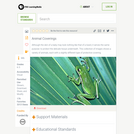
It takes a thick skin to withstand the hardships that life has to offer. This collection of images shows a variety of animals, each with a slightly different type of protective covering.
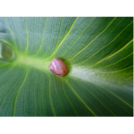
Students will explore the outdoor classroom in pairs looking for evidence of animal life and imagining what types of animals might live in and around the area.

This site is a searchable encyclopedia of thousands of photos, descriptions, sound recordings, and other information about individual animal species. Find out about amphibians, arthropods, birds, fishes, insects, mammals, mollusks, reptiles, and sharks. Explore special features on mammals, skulls, and frog calls. Students are invited to contribute.
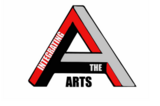
This resource was created by Ross Renfro, in collaboration with Dawn DeTurk, Hannah Blomstedt, and Julie Albrecht, as part of ESU2's Integrating the Arts project. This project is a four year initiative focused on integrating arts into the core curriculum through teacher education, practice, and coaching.
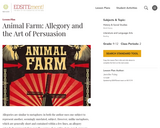
Allegories are similar to metaphors: in both the author uses one subject to represent another, seemingly unrelated, subject. However, unlike metaphors, which are generally short and contained within a few lines, an allegory extends its representation over the course of an entire story, novel, or poem. This lesson plan will introduce students to the concept of allegory by using George Orwell’s widely read novella, Animal Farm, which is available on Project Gutenberg.
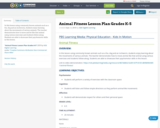
In this lesson using commonly known animals such as a fox, dog and an inchworm, students enjoy learning about the movements of various animals. The teacher demonstrates how to move and be like that animal using various exercises and students follow along. Students are able to showcase their psychomotor skills in this lesson.

This lesson presents an overview of the role of genetics, breeding, and reproduction in animal agriculture. Learners will become familiar with fundamentals of genetics, complete a Punnett square, understand phenotypes and genotypes, identify parts of reproductive systems, and discuss breeding systems used in the animal industry. This represents a portion of the Introduction to Agriculture, Food, and Natural Resources (AFNR) series in Nebraska middle and high school agricultural education.
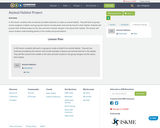
In this lesson, students will use teacher provided materials to create an animal habitat. They will work in groups and be assigned a habitat. Each group will need to include plants and animals found in their habitat. Students will present their finished project to the class and each member will give a fact about their habitat. The teacher will assess student understanding based on the models and presentations.

This is a lesson that can be used to teach beginning Introduction to Agriculture students about the types of drugs we administer to animals. Students then get to complete a hands-on lab activity where they learn about and demonstrate four types of injections.
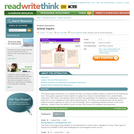
Supporting inquiry-based research projects, the Animal Inquiry interactive invites elementary students to explore animal facts and habitats using writing prompts to guide and record their findings.

Are animals intelligent? What is intelligence? How can you tell, whether animals are intelligent?

In this seminar you will learn all about the life cycle of the frog. You will explain the dangers that frogs face during each phase of their life cycle. You will apply past knowledge to new situations during this seminar and compare and contrast the plant life cycle to the life cycle of an animal.Standards3.1.4.A3Identify differences in the life cycles of plants and animals.

In this seminar you will learn all about the life cycle of the frog. You will explain the dangers that frogs face during each phase of their life cycle. You will apply past knowledge to new situations during this seminar and compare and contrast the plant life cycle to the life cycle of an animal.Standards3.1.4.A3Identify differences in the life cycles of plants and animals.
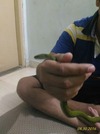
Animal Lovers Every animals have its own way to communicate with human. Likewise human also loves to human . Many peoples not like the animals and they behave crucial with animals.
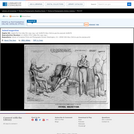
A swipe at President Van Buren's independent treasury system and his continuation of the monetary policies of predecessor Andrew Jackson. The artist, clearly in sympathy with the Whigs, links corruption in the federal customs and postal systems with the sub-treasury system, whereby federal funds were to be retained by the revenue-collecting agencies and other designated repositories, instead of private banks. The artist forecasts Van Buren's defeat in the 1840 elections. Van Buren, hypnotized by Jackson, is on a couch with a royal crown and scepter on one side and sword and purse on the other. Jackson, his toes touching Van Buren's, sits in a chair to the left with his white plug hat and cane next to him. On the right Treasury Secretary Levi Woodbury (arms crossed), Postmaster General Amos Kendall, and "Globe" editor Francis Preston Blair (far right) observe. Jackson: "Are you asleep? Do you hear me? Tell me what you see?" Van Buren: "I am asleep. I hear nobody but you.--I see a great pole, and a crowd of people. They are cheering an elderly man; whom they hail as President of the United States. On their banners are inscribed Whig Principles!!! I see a little man tumbling down a precipice; on his back is a mill stone inscribed Sub-treasury! oh! lord, oh! lord! Why it is myself!" Woodbury: "Ask him Dr. Jackson, if he sees any thing of "Price" or Swartwout?" (See "Price Current" and "Sub Treasurers Meeting in England," nos. 1838-21 and -20.) Kendall: "Ask him at what rate the Express Mail for North is going now?" Blair: "This will make a good paragraph for the Globe!"|Entered . . . 1839 by John Childs.|New York. Published & sold by J. Childs, Lithographer. 119, Fulton-Street.|Signed with monogram: EWC (Edward Williams Clay).|The Library's impression of the print was deposited for copyright on February 22, 1839.|Title appears as it is written on the item.|Davison, no. 122.|Weitenkampf, p. 58.|Forms part of: American cartoon print filing series (Library of Congress)|Published in: American political prints, 1766-1876 / Bernard F. Reilly. Boston : G.K. Hall, 1991, entry 1839-2.
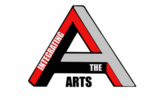
This resource was created by Cheyanne Jessen, in collaboration with Dawn DeTurk, Hannah Blomstedt, and Julie Albrecht, as part of ESU2's Integrating the Arts project. This project is a four year initiative focused on integrating arts into the core curriculum through teacher education, practice, and coaching.
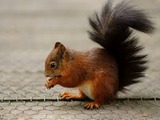
What do living things need to survive? Students will explore in their outdoor setting for animals in their habitat and generate a list of things found in the environment that support the life of the animals observed. In groups, students will identify the basic needs through a sticky note activity and then research these basic needs for the animals that appear in the fiction book, Brown Bear, Brown Bear, What Do You See? As a culminating activity, students will tap their creativity and use humor to write and publish a silly science-based storybook using Book Creator (or other publishing tool) about the basic needs and thneeds (things that we might think we need, but don’t really need) of these animals.